Should I Tile Every Wall in My Bathroom? Designers Agree on What's Most Practical, and What Looks Best

There's one particularly tricky decision you'll have to make when remodeling a bathroom —should you tile every wall?
Of course, there are plenty of areas to be confident you need some protection from water, including around the vanity, bath and in the shower, but many bathrooms don't include tiles everywhere. It is, of course, a personal preference, but is it more practical to tile all the walls? And which works better with modern design sensibilities?
To help you answer these question, we asked designers for advice. Here's what they had to say about this big bathroom tile dilemma.
Should You Tile Every Wall in a Bathroom?
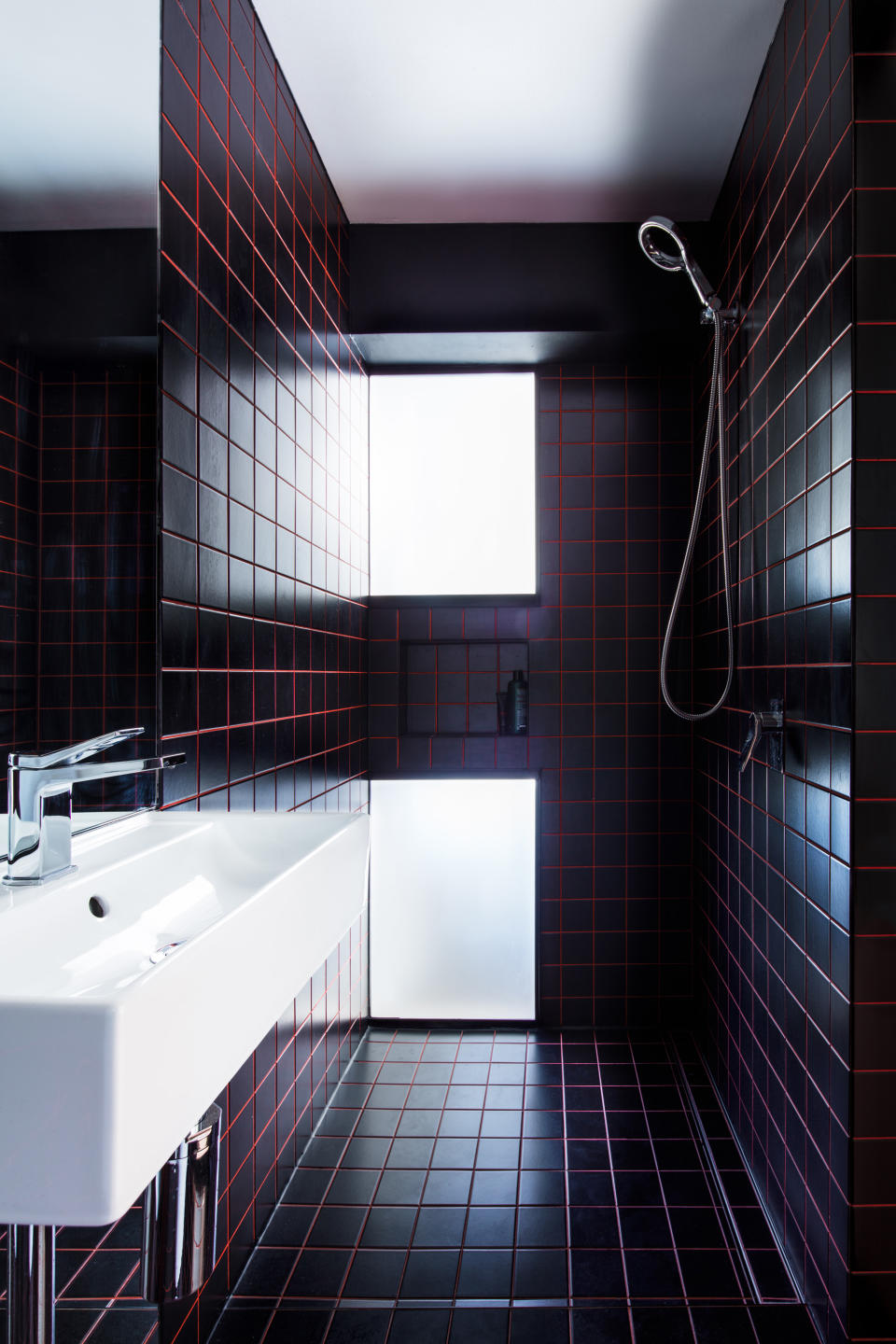
The simple answer is yes, but it is not a necessity. Bathroom tiles not only add aesthetic value but also imbue the space with practicality.
'When it comes to tiling your bathroom walls, it’s not an absolute necessity, but there are definite advantages,' says interior designer Nishtha Vashist. 'The key area to focus on is the shower wall. Tiling the shower wall to the ceiling is highly recommended because it simplifies cleaning and maintenance, and protects the wall from moisture damage. Paint and drywall are not waterproof and can lead to mold and decay if exposed to constant moisture.' Plus, tiling all walls will protect the room from water damage, if that's something you usually struggle with.
Tiles also add that finishing touch to the modern bathroom, and elevate its look.
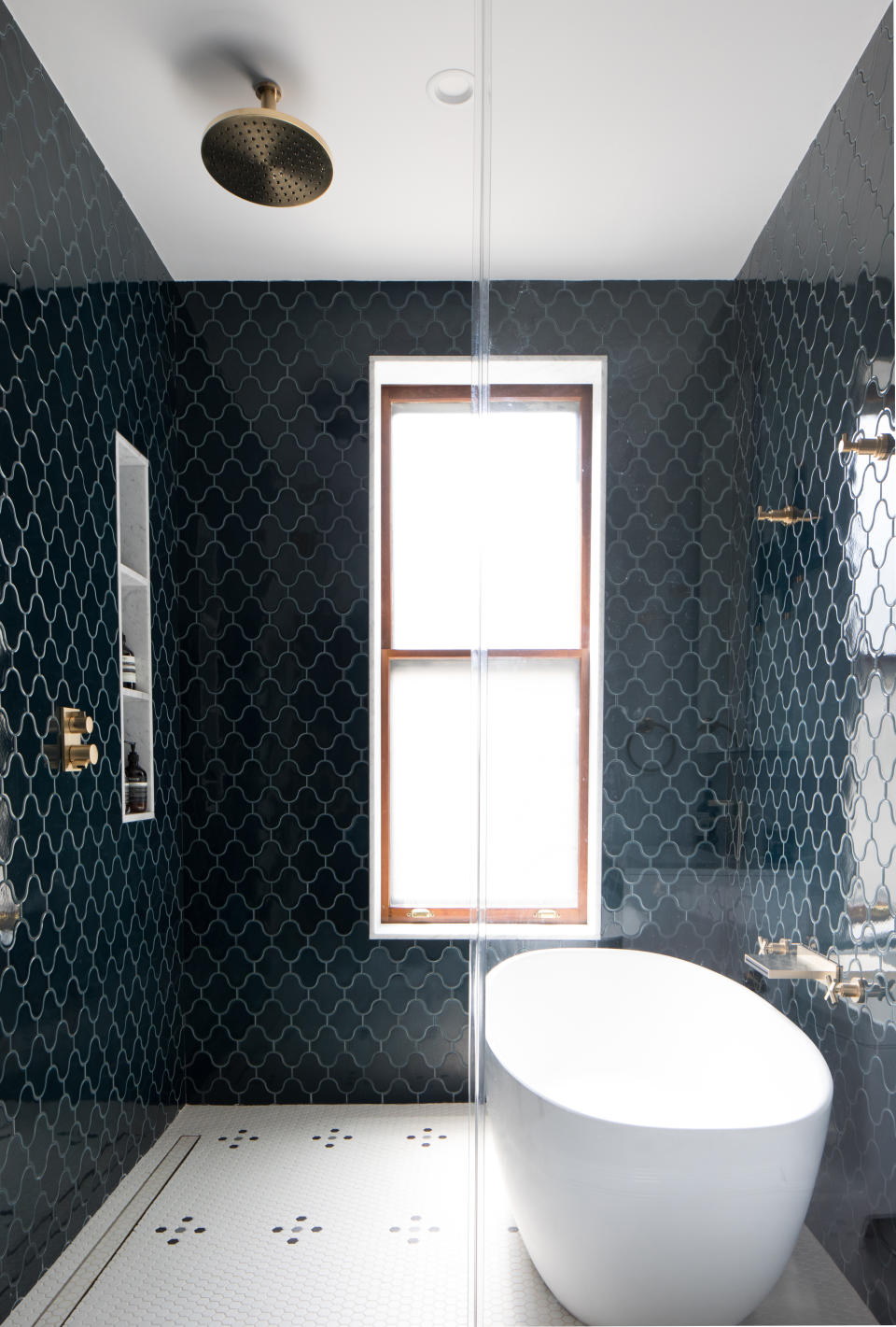
Turns out, there are many benefits to fully tiling the bathrooms. Remodeling a bathroom with floor-to-ceiling tiles can lend a swish hotel style, and a luxury bathroom look.
'Fully tiling the bathroom has multiple benefits: enhanced waterproofing, increased durability, and easy cleaning,' says Lauren Lerner, CEO and founder of Living with Lolo. 'Ceramic and porcelain wall and bathroom floor tiles offer a water-resistant barrier, resisting damage from moisture, mold, and mildew. They're durable, easy to clean, and come in various designs. Tiled walls can boost a home's resale value too, especially with low-maintenance features like low-porosity tiles and epoxy grout. Consider larger tiles, matte finishes, and regular cleaning for a pristine, hassle-free bathroom.'
But, are there any drawbacks? There is a cost implication to tiling the entire space, increasng the number of tiles you need, as well as more grout, and labor. Plus, there's always the extra maintenance cost, though it does also mean less investment in bathroom paint.
If you have a small bathroom, too many tiles might feel visually overwhelming, especially if you've chosen strong color, pattern or texture. Also, you will have to test the strength of the walls since tiles add to the load.
What are the alternatives to tiling every wall?
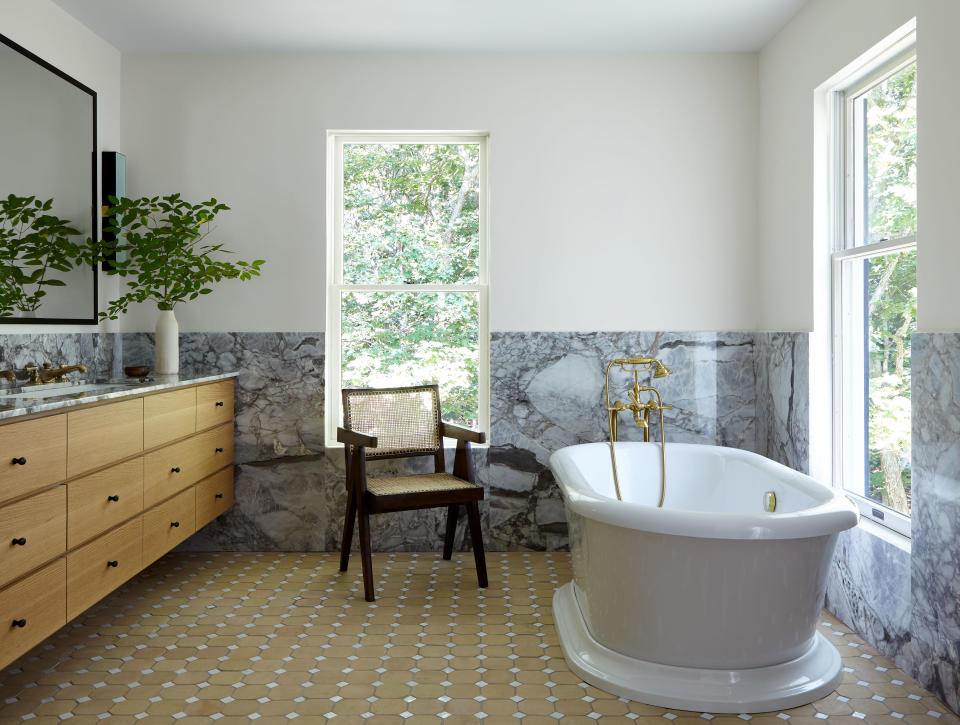
Lately, half-tiled bathrooms have risen in popularity, as this look is easy to create, and can add that distinctive touch to an otherwise modern white bathroom.
'For this East Hampton project, we chose Zio & Sons zellige unglazed tiles with a glazed “sea salt” bouchon,' says Sarah Sargeant, co-founder of Cochineal Design. 'We wanted the room to feel indoor-outdoor so we intentionally chose a material reminiscent of a fine outdoor patio.'
Plus, there are other ways to create the half-tiled look.
'One popular approach is the half-and-half concept, where you tile the lower half of the wall to protect against splashes, and use waterproof materials like tadelakt,' shares Nishtha. 'This not only provides protection but also adds a stylish touch to your bathroom. Trends today embrace waterproof wallpapers, lime wash, and other innovative materials. Each option offers unique aesthetics, from the rustic charm of marine-grade ply or painted tongue-and-groove cladding to the sleek, modern look of a half-tiled wall combined with floating shelves and mirrors.'
'Remember, there’s no one-size-fits-all answer,' avers Nishtha. 'The best approach depends on your style, budget, and the specific needs of your bathroom. Treat your bathroom as a living space, not just a utility room. Mixing tiles with other materials can create a unique and personalized look.'
This type of look works in both small to large bathrooms. But you'll have to bring your contractor and laborers on the same page while designing such a space. They'll have to work sequentially within the bathroom, as the process of plastering walls in non-tiled areas will take longer, and the walls need to dry completely before painting.
Plus, the non-tiled walls will have to be skirted for protection. The way the tiles are laid is of supreme importance as having a tile line drop up and down will create a chaotic look in the room.
Wall decor for tiled walls

Wall Shelf for Bathrooms (set of 2)
Size: 15.7" x 6"
Price: $22
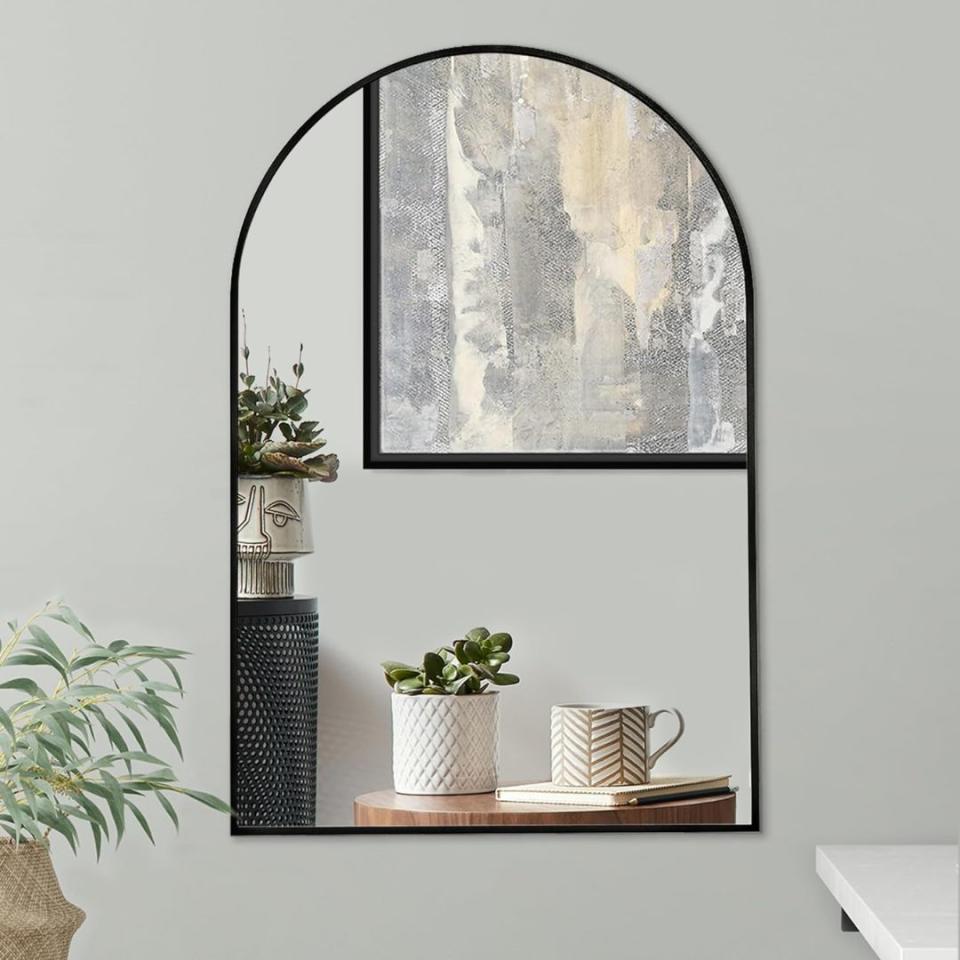
Americanflat Framed Black Arched Mirror
Size: 30" x 20"
Price: $56.99
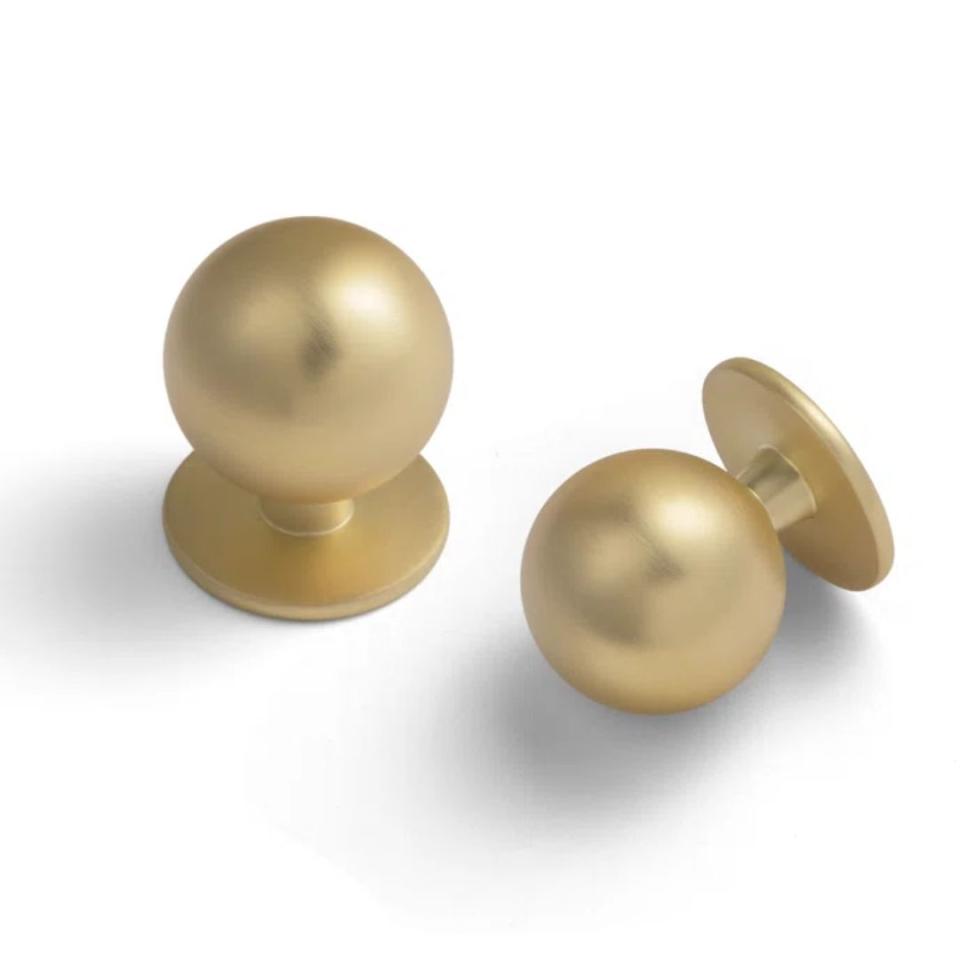
Round Knob (Set of 12)
Material: Distressed metal
Price: $41.27
Should a wet room be fully tiled?
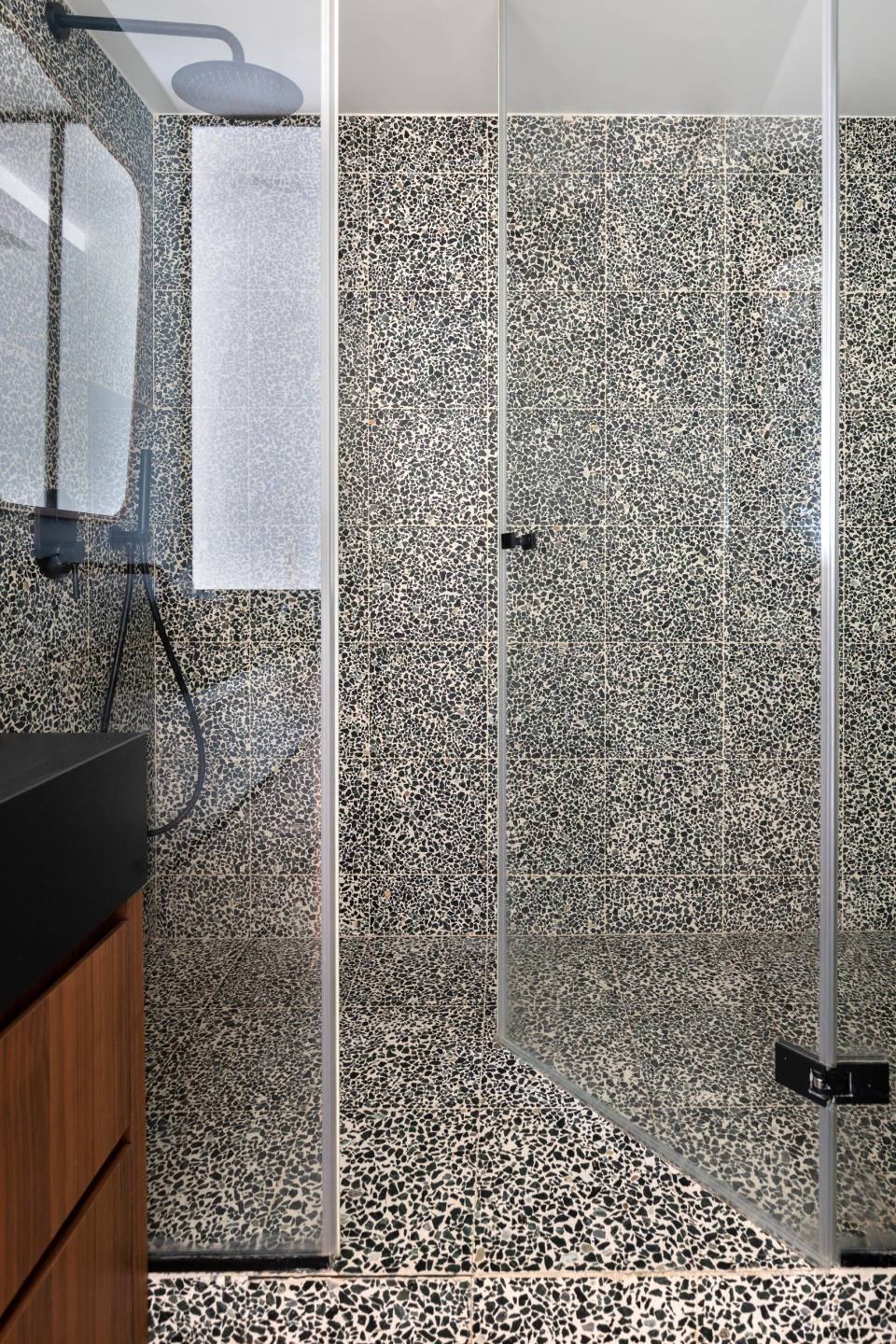
Fully tiling a wet room or walk in shower is generally the best approach. 'Fully tiling the entire wet room has both advantages and disadvantages,' says Nishtha. 'On the positive side, a fully tiled wet room can create the illusion of a larger space, particularly in smaller bathrooms. It also offers future flexibility, allowing for easy conversion to a wet room if not initially designed as one. On the downside, fully tiling a wet room can be costly, involving a significant investment in tiles, adhesive, grout, and labor. The grout maintenance is another consideration, as it requires regular upkeep to prevent discoloration and mold.'
'Additionally, while a fully tiled wet room offers a streamlined and practical solution, combining tiles with other waterproof materials can provide a balanced approach that suits both style and functionality, catering to individual tastes and budgets,' shares Nishtha.

